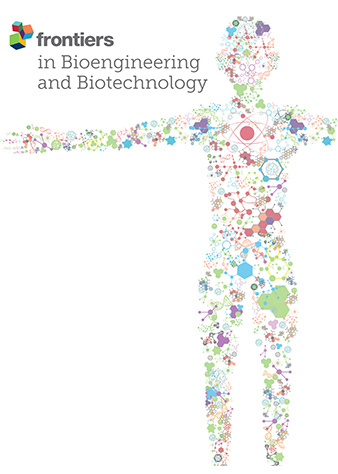Effects of victim’s body posture and attacker’s gender on slashing attacks: a biomechanical study
IF 4.3
3区 工程技术
Q1 BIOTECHNOLOGY & APPLIED MICROBIOLOGY
引用次数: 0
Abstract
ObjectiveSharp force injury has been and will remain to be a major cause of violent death; however, scientific evaluations on the impact of body posture of the victim and gender of the perpetrator on sharp force injury have been scarce. The purpose of this study was to evaluate the biomechanical characteristics found in individuals (male and female) when using a Chinese kitchen knife to slash the neck of a dummy while it was in the standing and supine positions. This work offers a solid basis for forensic identifications, criminal investigations, and court trials.MethodsA total of 12 male and 12 female college students participated in this study. Kinematic, kinetic, and surface electromyography (sEMG) data were evaluated when slashing the neck of a dummy while it was in the standing and supine positions using a Chinese kitchen knife.ResultsWhen slashing the neck of a standing dummy, participants showed shorter contact time (19.5%) and slower shoulder velocities (30.9%) as well as higher hip velocity (26.0%) and increased root mean square (RMS) and integral electromyography (iEMG) for the anterior deltoid (51.3% and 51.2%, respectively) compared to those while the dummy was in the supine position (all受害者身体姿势和攻击者性别对砍伤攻击的影响:一项生物力学研究
目的锐器伤一直是并将继续是暴力致死的主要原因;然而,有关受害者身体姿势和施暴者性别对锐器伤的影响的科学评估却很少。本研究的目的是评估个人(男性和女性)在站立和仰卧姿势下使用中国菜刀砍伤假人颈部时的生物力学特征。这项工作为法医鉴定、刑事调查和法庭审判提供了坚实的基础。结果当使用中式菜刀在站立和仰卧姿势下砍杀假人颈部时,参与者表现出较短的接触时间(19.与假人处于仰卧姿势时相比,参与者的接触时间更短(19.5%),肩部速度更慢(30.9%),髋部速度更高(26.0%),三角肌前部的均方根(RMS)和整体肌电图(iEMG)分别增加了 51.3% 和 51.2%(所有 p 均为 0.05),与性别无关。当假人处于站立和仰卧姿势时,男性参与者的肩速、肘速和腕速(分别为 22.6%、22.7% 和 24.4%)以及砍击速度(19.8%)、砍击力(24.2%)和能量(46.2%)均高于女性参与者(所有 p 均为 0.05)。此外,男性参与者的接触时间较短(17.8%),三角肌前部、肱二头肌、桡侧长伸肌和尺侧屈肌的 RMS 值和 iEMG 值也低于女性参与者(RMS 值分别为 98.9%、47.3%、65.6% 和 33.4%,iEMG 值分别为 115.1%、59.4%、80.1% 和 33.4%)。结论在不同身体姿势(站立和仰卧)下使用中国菜刀砍伤假人颈部时,砍伤速度、砍伤力和能量没有差异,表明受伤严重程度相似。然而,两种身体姿势下的砍伤动作模式存在明显差异,仰卧姿势下砍伤假人颈部时,接触时间更长、髋部速度更小、肩部速度更大、三角肌用力激活水平更低。性别对砍伤严重程度的影响可能更大,性别差异可能与体重差异有部分关系。本研究结果可为分析犯罪动机、案件重构、法院定罪和量刑过程提供量化指标和参考。
本文章由计算机程序翻译,如有差异,请以英文原文为准。
求助全文
约1分钟内获得全文
求助全文
来源期刊

Frontiers in Bioengineering and Biotechnology
Chemical Engineering-Bioengineering
CiteScore
8.30
自引率
5.30%
发文量
2270
审稿时长
12 weeks
期刊介绍:
The translation of new discoveries in medicine to clinical routine has never been easy. During the second half of the last century, thanks to the progress in chemistry, biochemistry and pharmacology, we have seen the development and the application of a large number of drugs and devices aimed at the treatment of symptoms, blocking unwanted pathways and, in the case of infectious diseases, fighting the micro-organisms responsible. However, we are facing, today, a dramatic change in the therapeutic approach to pathologies and diseases. Indeed, the challenge of the present and the next decade is to fully restore the physiological status of the diseased organism and to completely regenerate tissue and organs when they are so seriously affected that treatments cannot be limited to the repression of symptoms or to the repair of damage. This is being made possible thanks to the major developments made in basic cell and molecular biology, including stem cell science, growth factor delivery, gene isolation and transfection, the advances in bioengineering and nanotechnology, including development of new biomaterials, biofabrication technologies and use of bioreactors, and the big improvements in diagnostic tools and imaging of cells, tissues and organs.
In today`s world, an enhancement of communication between multidisciplinary experts, together with the promotion of joint projects and close collaborations among scientists, engineers, industry people, regulatory agencies and physicians are absolute requirements for the success of any attempt to develop and clinically apply a new biological therapy or an innovative device involving the collective use of biomaterials, cells and/or bioactive molecules. “Frontiers in Bioengineering and Biotechnology” aspires to be a forum for all people involved in the process by bridging the gap too often existing between a discovery in the basic sciences and its clinical application.
 求助内容:
求助内容: 应助结果提醒方式:
应助结果提醒方式:


